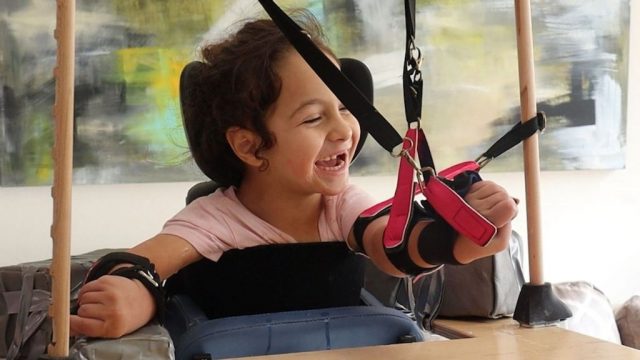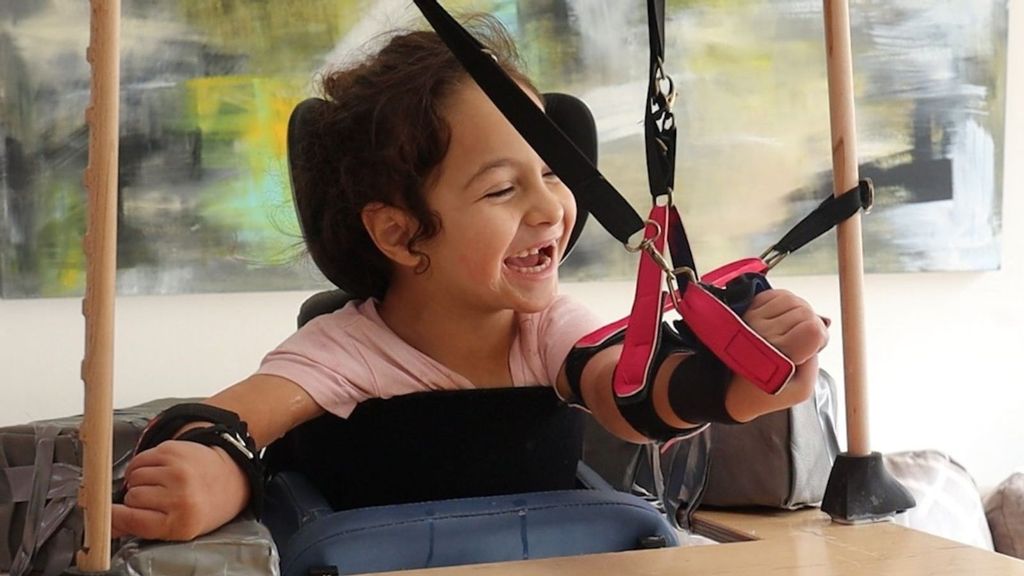
By Naama Barak
Five-year-old Shani loves drawing and playing, but she has disabilities that make these typical childhood activities difficult.
A team of volunteer makers called “Drawing Dreams” created a 3D-printed hand support enabling her to draw, play and eat independently. It worked so well that Shani’s special-ed kindergarten in Israel has ordered a few more.
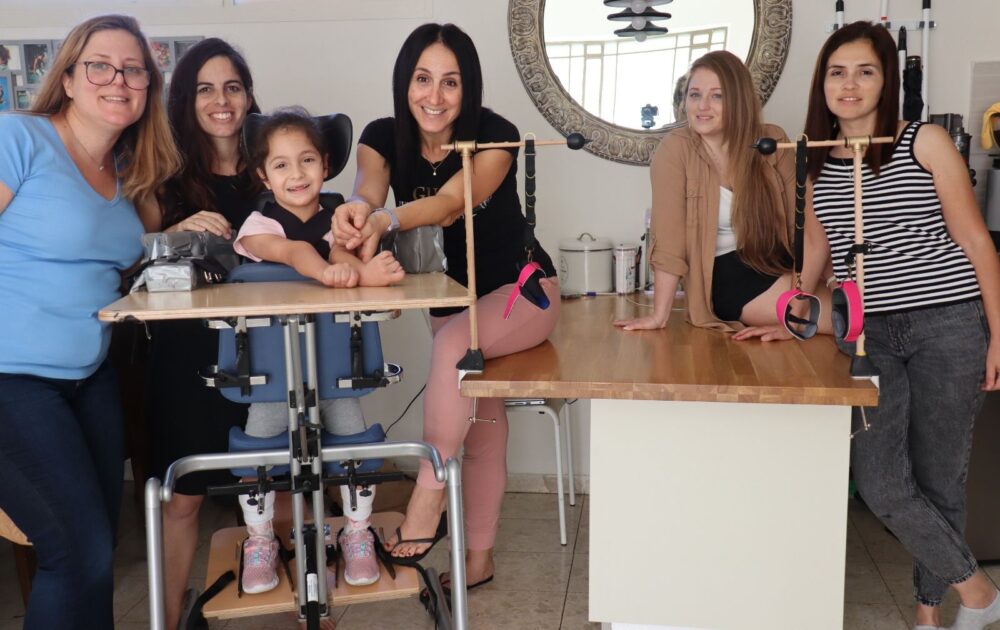
This was one award-winning device devised at the recent Global Innovation Challenge, where 50 teams from 15 countries competed to address real, everyday challenges of people with disabilities as posed by the need-knowers themselves.
“First of all, you have to identify problems that are authentic challenges faced by these vulnerable populations, explains Gidi Grinstein, founder and president of Tikkun Olam Makers (TOM), the nonprofit behind the challenge.
“TOM will only design a prothesis in response to a need of a person who is an amputee, who has a problem that does not have an affordable market or government solution. Such people are experts on their needs, so we call them ‘need-knowers.’ Only after we have a need-knower, we launch the innovation program.”
Each need-knower is teamed up with a voluntary group of programmers, designers, engineers and care professionals to find a workable solution.
And not only does the need-knower get to enjoy the fruit of this joint labor, but the design also gets uploaded onto the TOM library to be easily and accessibly reconstructed by anyone, anywhere.
“Our vision is to create the world’s biggest library of open-source free solutions for neglected problems of people living with disabilities, the elderly or poor people,” Grinstein says.
“Our vision is not just to create this library of solutions but also have them distributed to millions of users all over the world through 3D printers and maker spaces.”
Matching capabilities to needs
TOM addresses a systemic problem in Israel and other societies, says Grinstein.
“When I served in the government of Israel, I saw that dramatic gap between the tremendous capabilities of Israel in research and development of defense solutions and the weakness of the tools for creating and disseminating solutions for acute needs of vulnerable populations that cannot afford the solutions that they need,” he said.
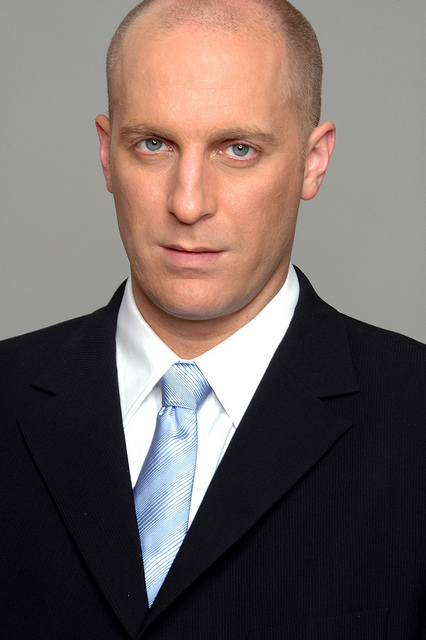
“The vision was to create a platform that will generate hundreds and then thousands of inventions and innovations that are extremely accessible and radically affordable,” he says.
“And then very quickly we realized that the challenge we’re looking at is not only an Israeli challenge but a global challenge, and the approach that we created offers a systemic solution to a systemic problem. Our vision was to create the Bell Labs of assistive technologies.”
As a result, Grinstein — a serial social entrepreneur — relocated TOM from Israel to the United States and globalized the platform.
This is how TOM came to showcase some of its latest creations in the U.S. Pavilion at the Dubai Expo.
“From the beginning, TOM was designed to also serve as a platform to allow people to collaborate across political, religious and national lines,” Grinstein says.
“The signing of the Abraham Accords created a historic opportunity to increase collaboration between Muslims, Jews and Christians across the Middle East. I went to Dubai and began to build our relationships there and also in Abu Dhabi and Bahrain.”
Award winners
In addition to the Drawing Dreams team from Israel, two other teams in the TOM Global Innovation Challenge were chosen to receive $5,000 each for their designs.
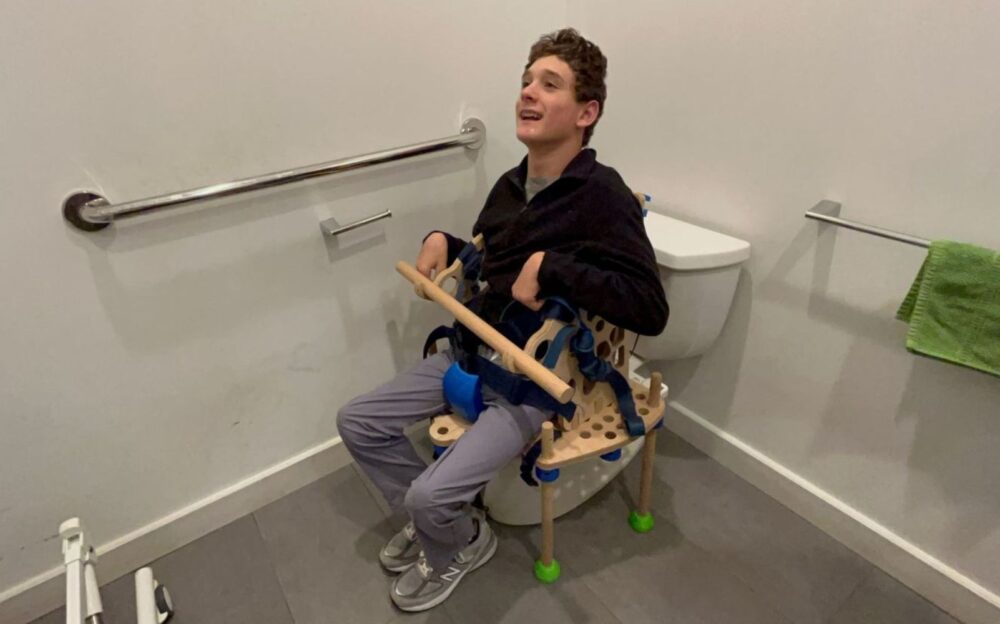
The “One-2-Go” team from the United States built a portable adaptive toilet seat for a 16-year-old boy with disabilities, enabling him to use the restroom more independently while traveling. It is adaptable to almost any toilet, and is strong, light and durable.
The third grand winner, the “Physiotherapy Talker Mount” team from Germany and Spain, addressed an issue raised by a woman who wanted to use a “talker tablet” while controlling her wheelchair without assistance. The 3D-printed frame and electronic mechanism lifts and lowers the talker attached to her wheelchair table, accomplishing the desired goal.
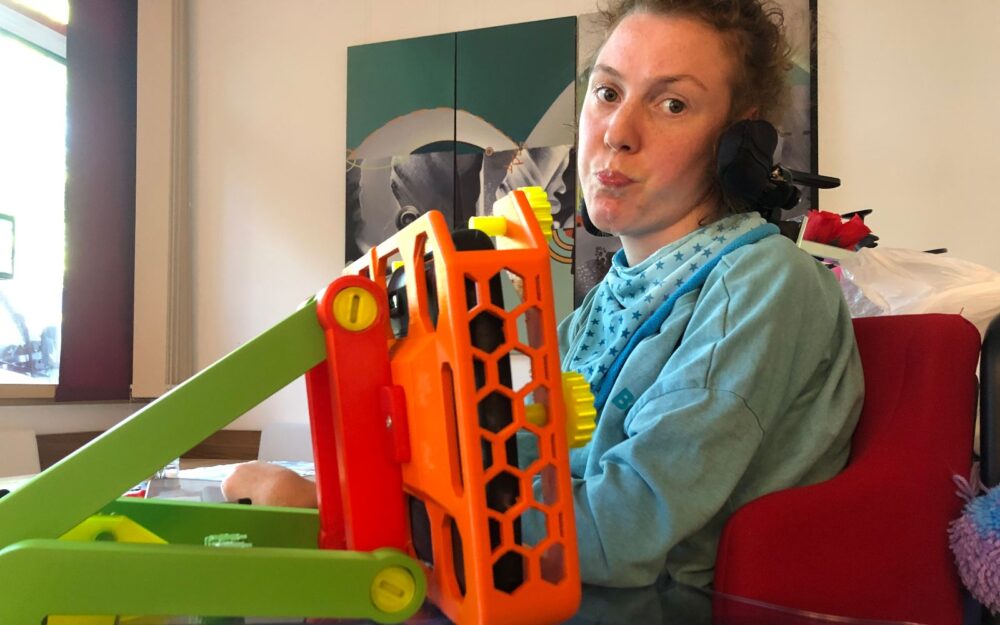
Makeathons vs. innovation challenges
None of the 50 teams in the 10-week challenge came face-to-face with one another. This, Grinstein notes, is rather unusual for TOM maker events.
“TOM was launched as a partnership with the Schusterman Foundation in July 2014. But we designed the vision of TOM in 2012 and began experimenting with its implementation later that year, until we launched the project a year and a half later,” he explains.
“Until COVID, our primary mode of operation was ‘makeathons,’ which are innovation marathons where peers came together with need-knowers to form teams that compete in a large space for 60 intense hours over three days to create a working prototype.”
Between 2014 and 2020, TOM communities around the world held more than 100 makeathons. Meanwhile, developer groups began meeting over extended periods of time to create prototypes for their need-knowers.
The pandemic ignited a pivot to innovation challenges that don’t require people to come together in the same space.
“We did two local innovation challenges including at University of Michigan and at Georgia Tech, and then took the plunge into the deep end with the Global Innovation Challenge,” says Grinstein.
The most recent challenge event was “three times bigger than the biggest makeathon that we ever had, at a third of the cost,” he said.
“It’s just incredible, the response and the ability to have 50 new ideas and multiple new inventions coming from all over the world,” he adds.
“But while the cost of creating a prototype decreased by 80 percent, we also paid a price in terms of community building. Makeathons build our communities. Innovation challenges do not.”
The next challenge
The next TOM challenge in January will involve 100 teams from the Abraham Accords countries.
“We like the idea of doubling our operation each year,” says Grinstein.
“We try to build both the demand side of unmet needs and the supply side of world-class talent. And as we have more and more solutions ready to be distributed on our website, we’re also building the distribution system and will soon invite maker spaces and people who have 3D printers to join our movement by onboarding themselves unto our website.”
If you own a 3D printer and want to volunteer its excess capacities, TOM will connect you with need-knowers in your area.
“We envision thousands of distribution points, so that every person will be within a short drive from the solution that they need,” Grinstein said.
Produced in association with Israel21C.
The post Makers Design Helpful Devices For People With Disabilities appeared first on Zenger News.

